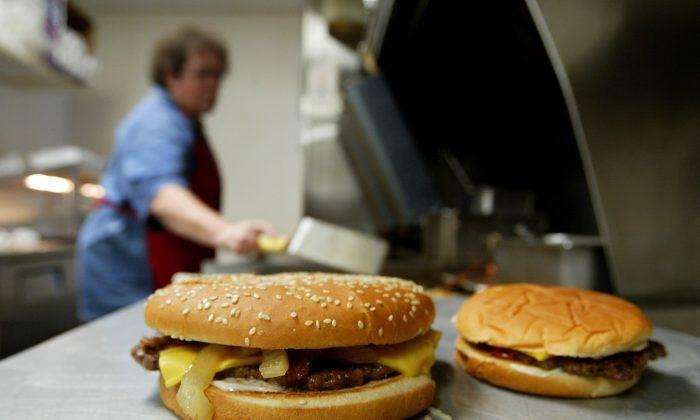A new study by Canadian researchers comparing the nutritional quality of kids’ meals at leading fast food chains in different countries shows that countries with relevant government regulations may be successful in making menu items healthier for children.
The study, led by Public Health Ontario scientist Dr. Erin Hobin and published in the Public Health Nutrition journal, looked into the nutritional content of food items on kids’ menus in Burger King, KFC, McDonald’s, and Subway in Canada, Australia, New Zealand, United Kingdom, and the United States.
The researchers looked at total calories, total and saturated fats, as well as sodium levels for 138 food items.
The study found that the average kids’ menu item contains 203 calories and the average sodium content is 390.5 milligrams.
“For boys aged 4 to 8, as an example, Canada’s Food Guide recommends approximately 1,500 to 2,000 calories per day depending on their activity level, and no more than 1,200 mg of sodium,” Hobin said in a press release.
“Eating some food items from the kids’ menu could significantly add to their overall energy consumption and exceed the recommended adequate intake of sodium, potentially leading to weight gain and other health problems.”
According to Statistics Canada, approximately one-third of Canadian children are overweight or obese.
“Eating out has become increasingly common in high-income countries, and now accounts for almost one-third of children’s daily caloric intake, twice the amount consumed away from home three decades ago,” Hobin said.
Although there were no statistically significant differences in some nutritional criteria examined in the study, Subway restaurants were found to offer the lowest total fat in their items.
US Has Fewer Calories
Across countries, fast food restaurants in the U.S. were found to contain fewer calories than their counterparts in the other countries. This may be the result of impending legislation in the U.S. requiring large chains to list the caloric content of the items on their menus. The other countries examined in the study do not have such legislation.
As an example, the researchers point out that the highest calorie item on Burger King’s menu in the U.S. is a cheeseburger, with 260 calories; in Canada, however, the highest calorie item is a double cheeseburger, with 450 calories.
Additionally, restaurant food items in the U.K. were found to have significantly lower sodium than the others, possibly because of the government’s Sodium Reduction Strategy that recommends voluntary reduction of sodium in processed foods.
Canada was found to have the highest sodium content and the second highest amount of calories in kids’ menu items.
“Children are important targets for nutrition interventions. These study findings may indicate that restaurants are responding to government initiatives to improve nutrition environments, and that these initiatives can substantially lead to an improvement in the nutritional quality of kids’ menu food products,” Hobin said.
The government of Ontario plans to introduce legislation requiring major chains to post caloric information on their menus.





